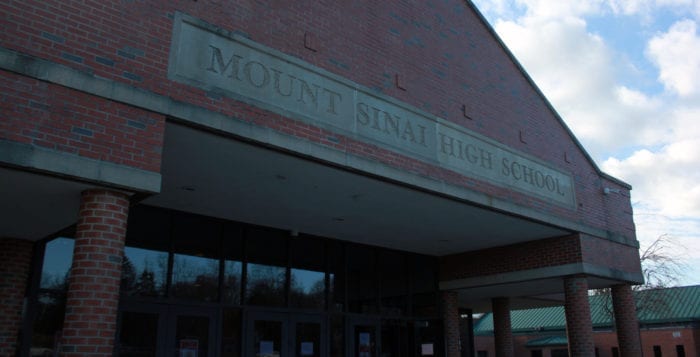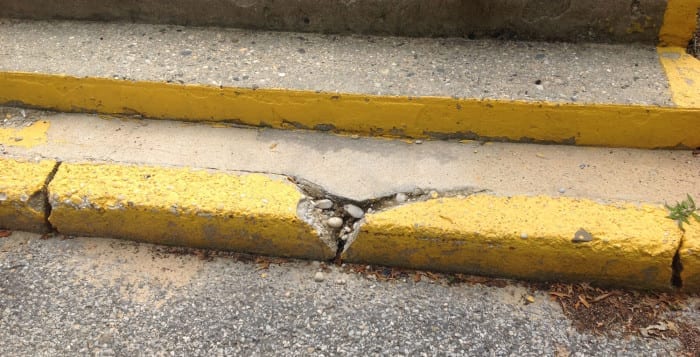The Mount Sinai School District is asking the community to pay higher taxes in exchange for upgrades to its buildings.
The district unveiled a capital projects proposal that will require passage of a bond by the community at a board meeting Sept. 26. The list of projects contains a number of renovations and upgrades officials hope will keep MS schools in line with other local districts and prepare its facilities for future generations.
“We’re not looking to do this all for tomorrow – we’re looking for providing for our kids 10 to 15 years from now,” board of education President Robert Sweeney said.
The planned total for the bond currently sits at $24,695,663, which would raise taxes by $235 for a household in the Mount Sinai community with an assessed value of $3,700, or $362 for an assessed value of $5,700, for example. This tax increase will be in addition to whatever tax value will be released for the 2019-20 budget.
Items to be included in the more than $24 million in projects are a large swathe of renovations and repair work to all three of the school buildings on campus, as well as the athletic fields and grounds. The bond proposal seeks to replace the public address and master time clock system across all three buildings. In addition, it asks for money to replace several exterior doors, windows and heating, ventilation and air conditioning systems across all school buildings on the campus.
In line with the district’s push for stronger building security, the bond details a number of security upgrades, including new surveillance cameras and intercom systems, exterior door automatic locking systems and film-lined glass windows to make it more difficult to see in.
The high school is receiving a substantial share of attention, with funds in the bond to finish replacement of the roof, which has long suffered from leaks. It also calls for the construction of new music practice rooms along with renovations to the art room, ceramics room, fashion/tech room, locker rooms and science labs.
In terms of outdoor facilities, the bond proposes two new field surfaces, one a multipurpose turf field at the high school and another a natural surface girls softball field.
The board will hold a special meeting Oct. 10 to discuss the merits of certain projects on the list. Sweeney said he wanted to be careful to only go out to bond for projects the district wouldn’t normally be able to complete with excess fund balance.
“If I can pay for it, why should I put it on credit?” he said.
The board also detailed a number of potential projects not included on the main list to be discussed prior to approving a final menu, like replacing stage lighting at Mount Sinai Elementary School and reconfiguring the library in the middle school. The high school could see the auditorium seating replaced along with additions to the orchestra room and the main office. The biggest extra projects included the construction of a new 6,500-square-foot maintenance storage garage and the creation of two new synthetic turf fields, one for softball and another for baseball.
The total for the additional projects is about $26 million. If the district were to include everything from additional projects and the bond as currently proposed, the total would equal $50,483,500, which would add $480 or $740 per year in additional taxes for homes assessed at $3,700 or $5,700, respectively.
Board Vice President Lynn Jordan said that several months ago the original list of projects provided to the board equaled close to $68 million, and she thought the 20 Mount Sinai residents and school employees on a bond committee formed during the summer did a good job in focusing down on what was most critical.
“They put their hearts and souls into this, and I’m very impressed with how they all handled deliberations,” Jordan said.
Mount Sinai resident Brad Arrington said he hoped the school would be conscientious not to make extensive changes just to keep up with other local school districts.
“It can be easy to feel envious of what other districts have, but we need to focus on what we can afford,” Arrington said. “We need to take a balanced approach, with some of our focus dedicated to sports, some to the arts.”
In May district residents approved a $5 million capital project referendum. The funds have already gone toward finishing refurbishing the school’s football field, and replacing perimeter fencing and fixing a portion of the high school roof is also underway.
Residents are encouraged to attend or send in comments to the board before the Oct. 10 meeting.
Once the board votes to approve the bond, there will be a mandated 45-day period before the bond can be brought to a community vote. The board will determine when a vote will be held after its Oct. 27 board meeting.






